This photo-essay documents about 2 days of experimentation that resulted in a pretty stupendous new variation on Max’s “Cabin Stove.” The overall footprint of the stove determined the firebox size, and the geometry resulted in a rectangular heat riser that took hot gasses from a vertical throat in the corner of the firebox — unconventional, but it worked amazingly well. More to come! (Ed. Note: This stove, like so many others, is merely one more in a long line of innovations and adaptations, all based on the same basic principles: burn the fuel fast, hot, & clean, and extract and store as much heat as possible prior to venting. Within this long tradition, however, valuable technical analysis and development has recently been offered by a Danish builder named Peter Vandenberg. His contribution have provided inspiration and guidance for understanding and improving the hows and whys of clean combustion. Peter offers comments at the end of the post, and is a regular contributor (along with Lasse Holmes) to an online stove forum at http://donkey32.proboards.com/.
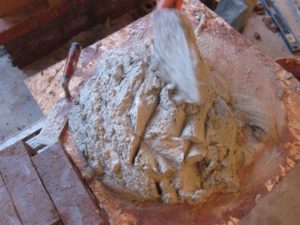
mortar: approx. 2 parts mason’s sand, 1 part clay, and a trowel or three of ash; the ash makes it buttery and easy to work — and possibly stronger

bottom channels are laid up on a layer of solids, 3 bricks wide by 5 deep (classic (fibonacci) proportions!)

capping layer: our solids were a bit bigger than the cored bricks, which made for a nice reveal around the edge
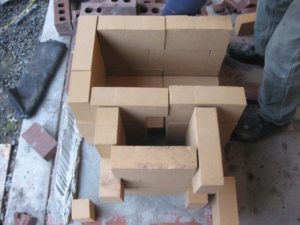
slot size: our source for tech details: http://donkey32.proboards.com/thread/734/peterberg-batch-box-dimensions
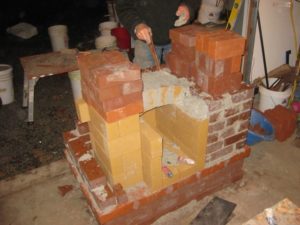
we added extra weight temporarily to the buttresses supporting a 4-brick arch, so it doesn’t push the walls apart
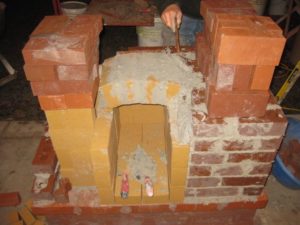
hand made arch: lasse’s quick formless technique requires one person holds the bricks in place while others fill the spaces w/chips and mortar
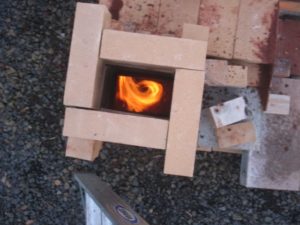
third experiment: lasse wanted to try moving the vertical slot from the center to the corner of the firebox
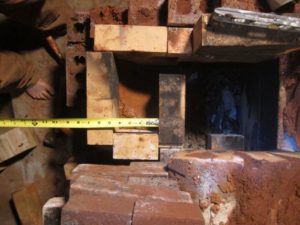
We’re sold on the new design: we rebuild the firebox in the actual stove accordingly (now called the “sidewinder”)
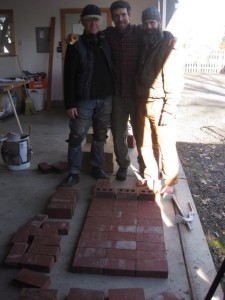

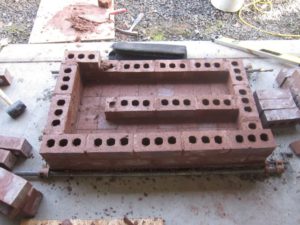
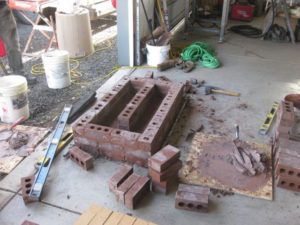
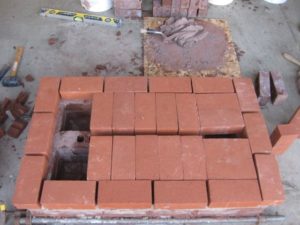
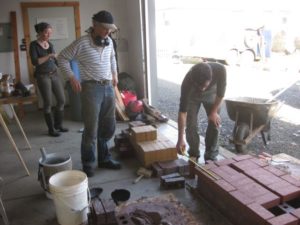
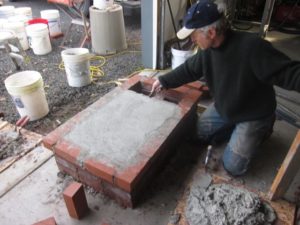
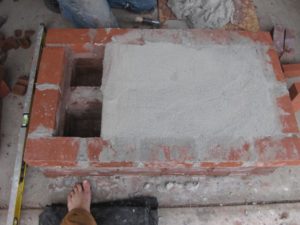


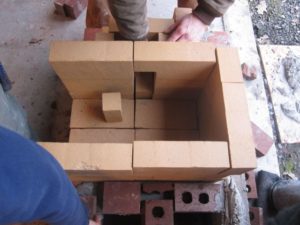

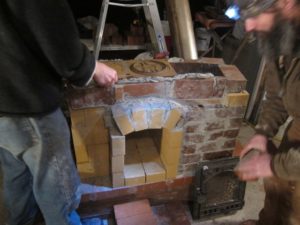


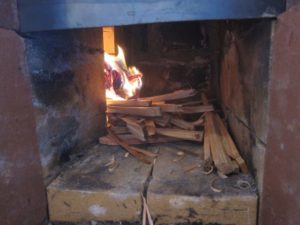

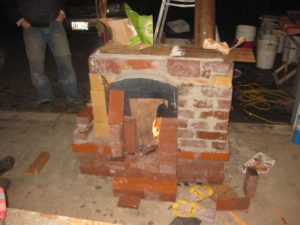

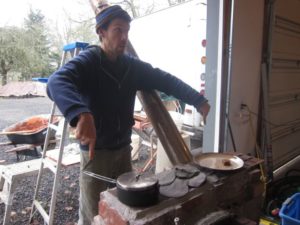

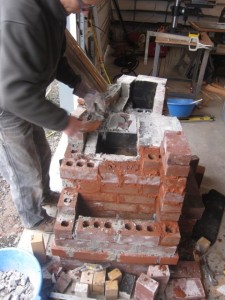
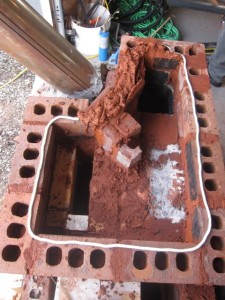
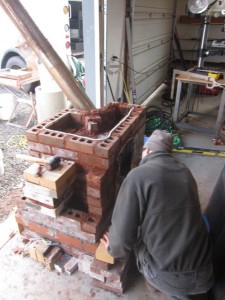
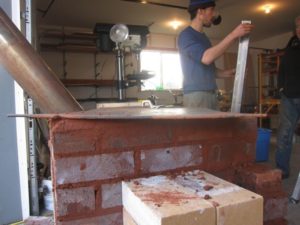
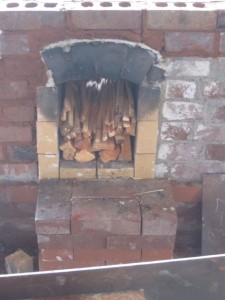

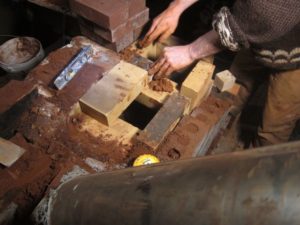
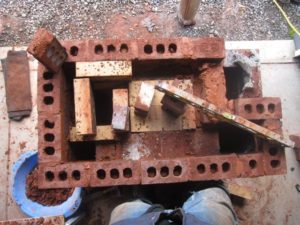
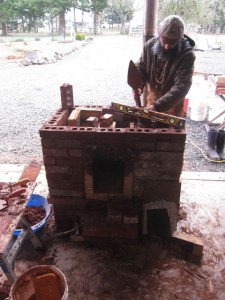
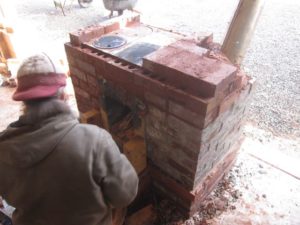
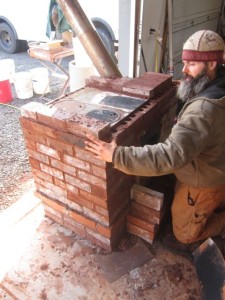
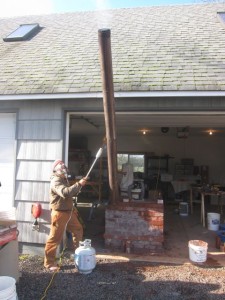
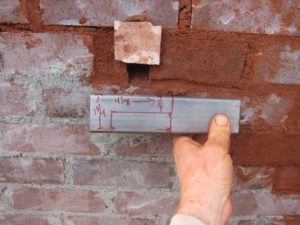

Hi Kiko, beautiful pictures! You may not remember me- I took a workshop from you at Cob Cottage in May 2011. Then I moved to NC, got married and had some kids, and I’m only now getting around to building us a house. This little stove would be the perfect solution for my space, and I have an experienced mason to help me with technique, but I’d really like to see plans for this improvement in addition to your very thorough photos, and any advice for reincorporating hot water. Thank you for the essential work you continue to do!
The plans are now available: The Cabin Stove Plan Set !
Another comment, I’m sorry, I couldn’t resist after seeing the pictures.
The secondary air is best fed in as close to the riser as possible but certainly not inside it. This seems to be a kind of general rule, I have seen it happen in three completely different designs.
This is what I’ve found out:
Feeding air is best in or right in front of the port where under pressure is lowest, turbulence right after that. Also turbulence before and after the air injection wasn’t any good for the quality of the burn, rather the contrary.
regards, Peter van den Berg
Peter, thanks for your comment; it’s an honor! We have all gained greatly from your contributions to date. Lasse told us he’d be working with you at Wildacres this year, and I imagine by then Lasse will have refined the design further. I’m sorry I won’t be there myself to meet you, but meanwhile, greetings and gratitude from Oregon.